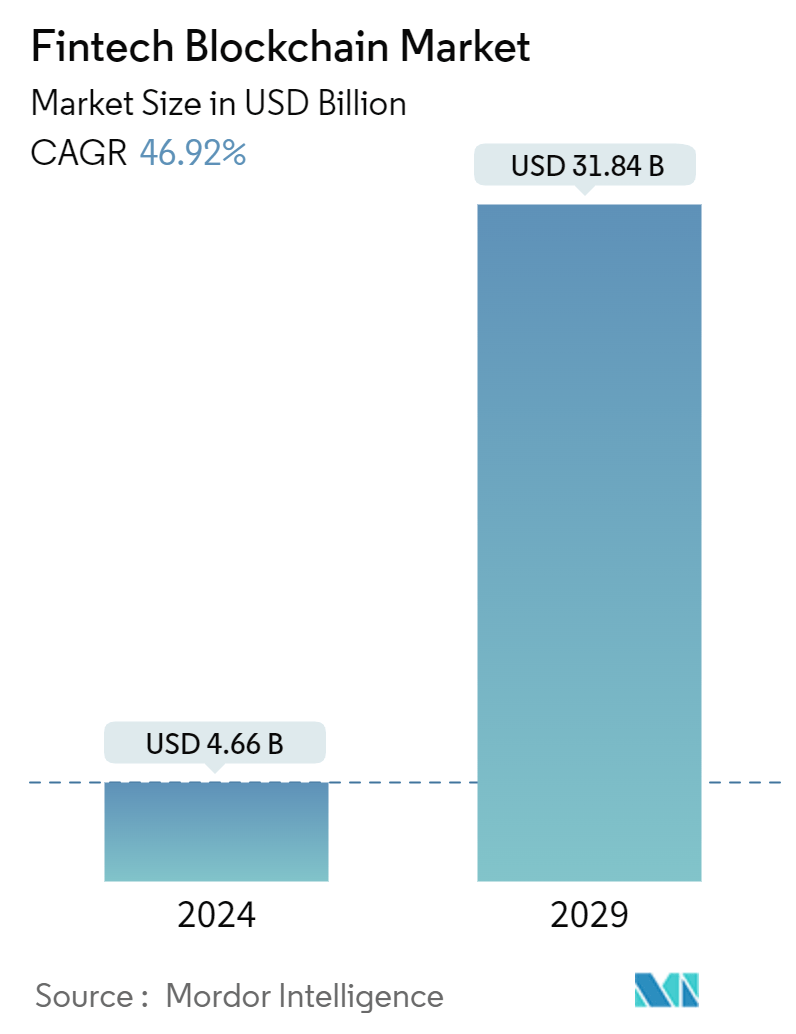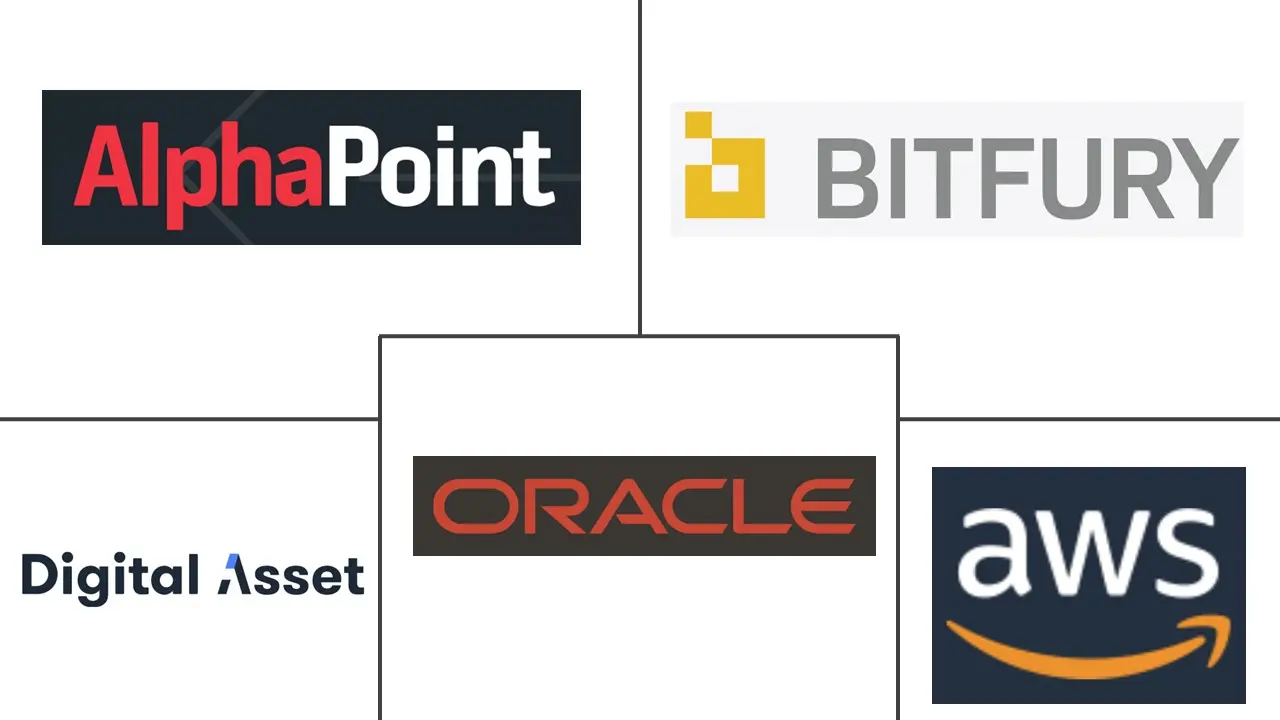Market Size of Fintech Blockchain Industry

| Study Period | 2019 - 2029 |
| Market Size (2024) | USD 4.66 Billion |
| Market Size (2029) | USD 31.84 Billion |
| CAGR (2024 - 2029) | 46.92 % |
| Fastest Growing Market | North America |
| Largest Market | Asia Pacific |
Major Players
*Disclaimer: Major Players sorted in no particular order |
Need a report that reflects how COVID-19 has impacted this market and its growth?
Fintech Blockchain Market Analysis
The Fintech Blockchain Market size is estimated at USD 4.66 billion in 2024, and is expected to reach USD 31.84 billion by 2029, growing at a CAGR of 46.92% during the forecast period (2024-2029).
The blockchain-related fintech industry has been experiencing growth due to various factors, such as the rising market cap of cryptocurrencies and ICOs, increasing demand for distributed ledger technology, and adoption of advanced blockchain solutions in financial institutions. The financial industry's digital transformation is also contributing to the growth of the fintech blockchain, as digital banking technologies and automated chatbots for customer service are experiencing rising demand.
The adoption of cryptocurrencies and digital tokens for making payments is expected to boost the market growth. Many fintech organizations have also started adopting blockchain technology to simplify business procedures, reduce fraudulent activity, and enhance customer service quality. Ripple and other blockchain-based platforms are gaining interest, which is anticipated to lead to greater acceptance in the future. Stablecoins are also gaining popularity as they increase liquidity, cost savings, and stability, and they are a fascinating example of DeFi protocols.
Increased operational efficiency, faster transactions, enhanced security, compliance benefits, infrastructure cost savings, improved cross-border transactions, financial inclusion, and increased competition and innovation drive the reduced total cost of ownership in the fintech blockchain market.
Various organizations are adopting blockchain in trade and finance systems to build smart contracts between participants, increase efficiency and transparency, and offer newer revenue opportunities. Blockchain's identical recording capabilities make the existing clearing and settlement process redundant. Banks and other financial institutions are adopting blockchain-enabled IDs to identify people. Improved results are from organizations' capacity to foresee emerging trends in financial blockchain applications and develop blockchain functionality.
The lack of clear and consistent regulatory standards makes it difficult for fintech blockchain companies to ensure compliance with various legal companies' work to navigate the evolving regulatory landscape.
The COVID-19 pandemic negatively impacted many industries globally, including blockchain-related fintech industries. Lockdowns and supply chain disruptions made it difficult for industry participants to predict the resurgence of the fintech blockchain industry. However, systemic changes brought on by the crisis are anticipated to impact this market significantly. Despite the challenges, the fintech blockchain market is expected to continue its growth.

